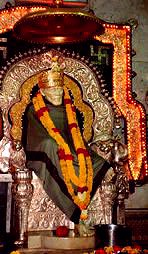In the quest to get great pictures, consumers invest significant sums of money in either a film or digital camera. After sifting through the options of lenses, zoom, resolution, and so forth, the right camera is chosen. Next, buyers need to turn their attention toward a selecting a camera bag to protect their new purchase and to make it convenient and comfortable to take along. Camera bag options are numerous but consumers can simplify the process by considering four things when making a choice.
What needs to go in the camera bag?
Think about what equipment will need to be toted around. For many people a bag that will accommodate their camera, a few rolls of film, and some batteries is enough. A small case with a couple of pouches may fit the bill.
For those who also want to carry extra lenses, cleaning cloths, a small tripod, or memory cards a larger bag with more pockets and dividers will be necessary. A good bag must accommodate all of the equipment that will be used. Some bags offer moveable pouches and dividers that allow more flexibility in storing the various sizes and shapes of accessories that might potentially go in the bag.
How well will the bag protect the camera and other contents?
The bag needs to be well constructed. The stitching on the straps for instance should be reinforced/double stitched. The fabric should be suitable for the environments in which it will be carried. A simple vinyl bag won't offer much protection in wet, rugged conditions outdoors. Waterproof bags or covers are necessary in such environments. Durable cordura is one of several materials that are more suitable. Insulated bags that allow the user to insert solid freezer packs to keep the camera and film cool are good when toting a bag for any extended period of time in hot weather.
Compartments are important to protect the contents of the camera bag. Contents should not be touching, rubbing, and hitting against each other while they are being transported; thus compartments for each item are important. Any bag selected should fit the camera well to limit its movement within the bag. Padding throughout the bag is critical as well.
Zippers offer a more secure seal on the bag than most other closures and thus offer greater protection.
Is the bag comfortable to carry?
The purpose of a camera bag is to allow the owner to take it with them wherever they go. If the bag is uncomfortable or difficult to carry it doesn't serve its purpose. Belt pouches can be a handy, no hands, means of toting around a small camera, a battery, and a few rolls of film but if more equipment is needed, bags with a shoulder strap are more appropriate. Many people find that if a bag will be carried for a significant period of time a back pack style camera bag allows more comfort as the weight is not distributed to one side.
Padding enters the picture again here with comfort. Padding wherever the bag touches the body can be beneficial; particularly on any straps. Shoulder straps generally offer the greatest comfort when they are not only padded but wide as well.
Ease of use is also a "comfort" factor. Buyers should check how easy it is to retrieve equipment and materials from the bag. This includes the ease of operating clasps, zippers and other closures as well as the arrangement of compartments within the bag. All items should be accessible.
Is the camera bag durable?
From quality fabric to reinforced stitching, the construction will determine durability. Closures are also critical. Zippers should be large toothed, and if going into wet environments, they should be covered. Metal clasps are more durable than plastic ones and tend to reduce any issues with breakage.




Tuesday, June 24, 2008
lakky 207
Subscribe to:
Post Comments (Atom)





No comments:
Post a Comment